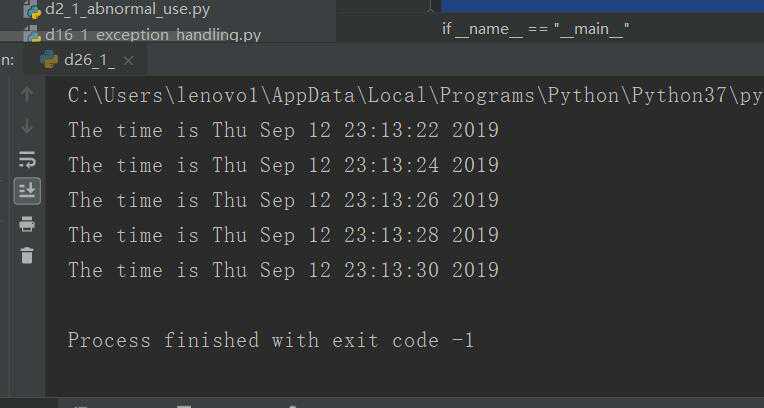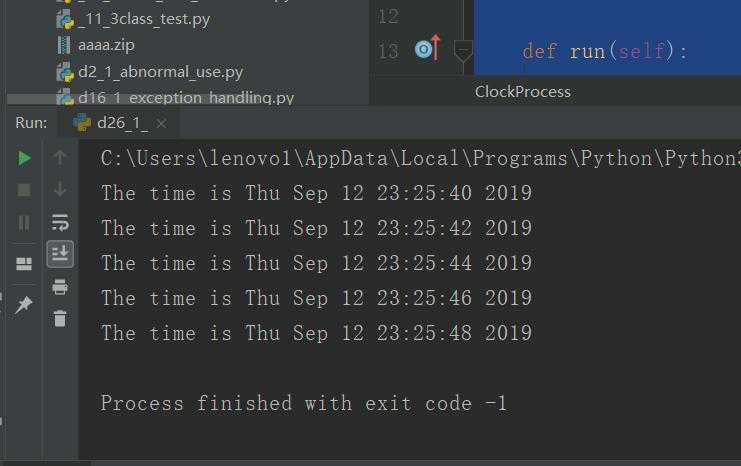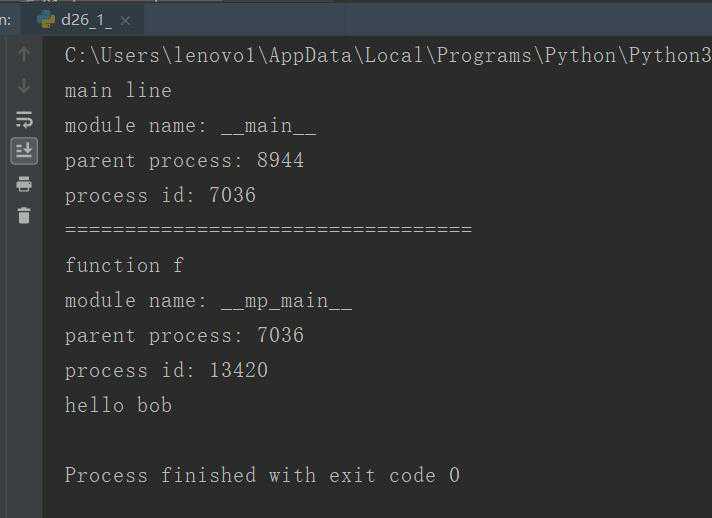标签:future blob 级别 __init__ port 派生 clock 微信 bsp
一、线程替代方案
1.subprocess
(1)完全跳过线程,使用进程
(2)是派生进程的主要替代方案
(3)python2.4后引入
2.multiprocessing
(1)使用threading接口派生,使用子进程
(2)允许为多核或者多CPU派生进程,接口很threading非常相似
(3)python2.6
3.concurrent.futures
(1)新的异步执行模块
(2)人物级别的操作
(3)python3.2之后引入
4.多进程
(1)进程间通讯(InterprocessCommunication,IPC)
(2)进程之间无任何共享状态
(3)进程的创建
i.直接生成Process实例对象,举例
import multiprocessing from time import sleep,ctime def clock(interval): while True: print("The time is %s" % ctime()) sleep(interval) if __name__ == "__main__": p = multiprocessing.Process(target= clock,args=(2,)) p.start() #从运行就可以看出来主进程已经结束了,但是子线程仍然在运行着 #和我们之前讲的线程,有一个最大区别就是线程在主进程里面,主进程结束了,子线程就结束了 #子线程从属于进程,子进程与进程之间是并列关系 #这里的程序停止,是我手动停止的

ii.派生子类
举例:重写子类,和我们之前讲的线程的差不多,这里民重写了最重要的两个函数,一个是初始化子类,继承父类的初始化,第二个就是运行函数
class ClockProcess(multiprocessing.Process): def __init__(self,interval): super().__init__() self.interval = interval def run(self): while True: print("The time is {0}".format(ctime())) sleep(self.interval) if __name__ == "__main__": p2 = ClockProcess(2) p2.start()

iii.在os中查看pid,ppid以及他们的关系
def info(title): print(title) print("module name:",__name__) #得到父进程的id print("parent process:",os.getppid()) #得到本身进程的id print("process id:",os.getpid()) def f(name): info("function f") print("hello",name) if __name__ == "__main__": info("main line") print("==================================") p = multiprocessing.Process(target=f,args=("bob",)) p.start() p.join()
解释:先调用了一个函数,然后又调用了一个嵌套函数的函数

四、源码
d26_1_multiprocess_exercise.py
https://github.com/ruigege66/Python_learning/blob/master/d26_1_multiprocess_exercise.py
2.CSDN:https://blog.csdn.net/weixin_44630050(心悦君兮君不知-睿)
3.博客园:https://www.cnblogs.com/ruigege0000/
4.欢迎关注微信公众号:傅里叶变换,个人公众号,仅用于学习交流,后台回复”礼包“,获取大数据学习资料

标签:future blob 级别 __init__ port 派生 clock 微信 bsp
原文地址:https://www.cnblogs.com/ruigege0000/p/11515703.html